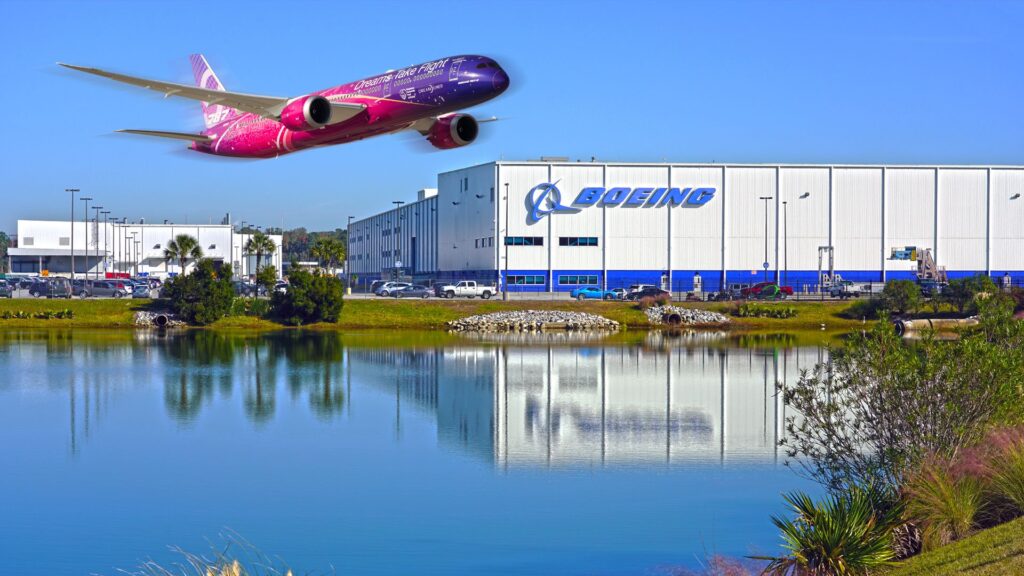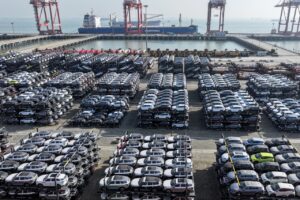
Boeing is ramping up its aircraft production as global demand for air travel surges, recovering from the setbacks caused by the COVID-19 pandemic and previous trade tensions. The aerospace giant’s supply chain now includes over 5,000 suppliers across more than 150 countries, highlighting the interconnected nature of the modern aviation industry. This resurgence is termed Globalization 4.0 by the World Economic Forum, reflecting the ease of managing production operations worldwide.
Boeing’s strategy has involved relocating some manufacturing back to the United States while also enhancing its partnerships. A notable move includes the merger with Spirit AeroSystems, which produces over 70% of the components for the 737 MAX. This decision aims to address quality control issues that have plagued the aircraft line, particularly after the tragic accidents that grounded the fleet for an extended period.
The Boeing Renton Factory: A Legacy of Efficiency
Located in Renton, Washington, the Boeing factory is often cited as the most efficient aircraft manufacturing facility globally. Since its inception, it has produced over 14,000 jets, contributing to approximately 30% of the world’s commercial airliner fleet. The Renton plant currently assembles the 737 MAX and the P-8 Poseidon, a military variant of the Boeing 737-800.
The 737 MAX is a key focus for Boeing, despite its troubled past. The aircraft has recovered from earlier setbacks and is now selling in record numbers. As quality assurance measures improve, production rates are expected to increase significantly. The Renton facility’s historical roots date back to Boeing’s beginnings in the early 20th century, marking it as a cornerstone of the U.S. aviation landscape.
The Everett Plant: A Manufacturing Powerhouse
Boeing’s Everett, Washington factory holds the title of the largest manufacturing building in the world by volume, covering over 98.3 acres. This facility is responsible for assembling iconic models such as the 747, 767, 777, and 787. The production of the 747, known as the “Queen of the Skies,” is set to conclude by 2023.
Everett is currently focused on the development of the 777X, which promises to be the largest twinjet ever built. Designed to leverage advancements from the 787, the 777X features innovative designs, including folding wingtips and the powerful GE9X engines. This new model aims to meet the growing demands for efficiency and passenger comfort in long-haul air travel.
Charleston and Zhoushan: Expanding Global Reach
On the East Coast, Boeing operates a significant facility in Charleston, South Carolina, dedicated solely to the assembly of the 787 Dreamliner. This plant employs thousands of technicians and has proven crucial for Boeing’s revenue, particularly as challenges with the 737 MAX and 777X persist.
Meanwhile, Boeing has established a notable presence in China through its Zhoushan facility, a joint venture with the Commercial Aircraft Corporation of China (COMAC). This site focuses on the final assembly and outfitting of the 737 MAX for Chinese customers. Since its opening in 2018, it has processed approximately 100 aircraft per year.
The collaboration with COMAC highlights Boeing’s commitment to the Chinese market, which now accounts for a third of global 737 deliveries. However, trade tensions have intermittently hampered operations, leading to delivery delays and logistical challenges.
Aiming for Recovery and Growth
In light of recent incidents, including a door plug failure on an Alaska Airlines 737 MAX in early 2024, Boeing has intensified its quality control and safety measures. The company is determined to restore its reputation for safety and reliability, a hallmark of its brand.
Despite challenges, the 737 MAX remains the fastest-selling aircraft in Boeing’s history, with a significant backlog of orders. The Federal Aviation Administration (FAA) has recently approved an increase in production limits from 38 to 42 planes per month, reflecting confidence in Boeing’s recovery efforts.
As airlines worldwide continue to order the 737 MAX, particularly the MAX 7 and MAX 10 models, Boeing is poised to ramp up production significantly. The company’s ability to navigate these complexities will be crucial for meeting the growing demand in the aviation sector and affirming its position as a leader in the industry.







